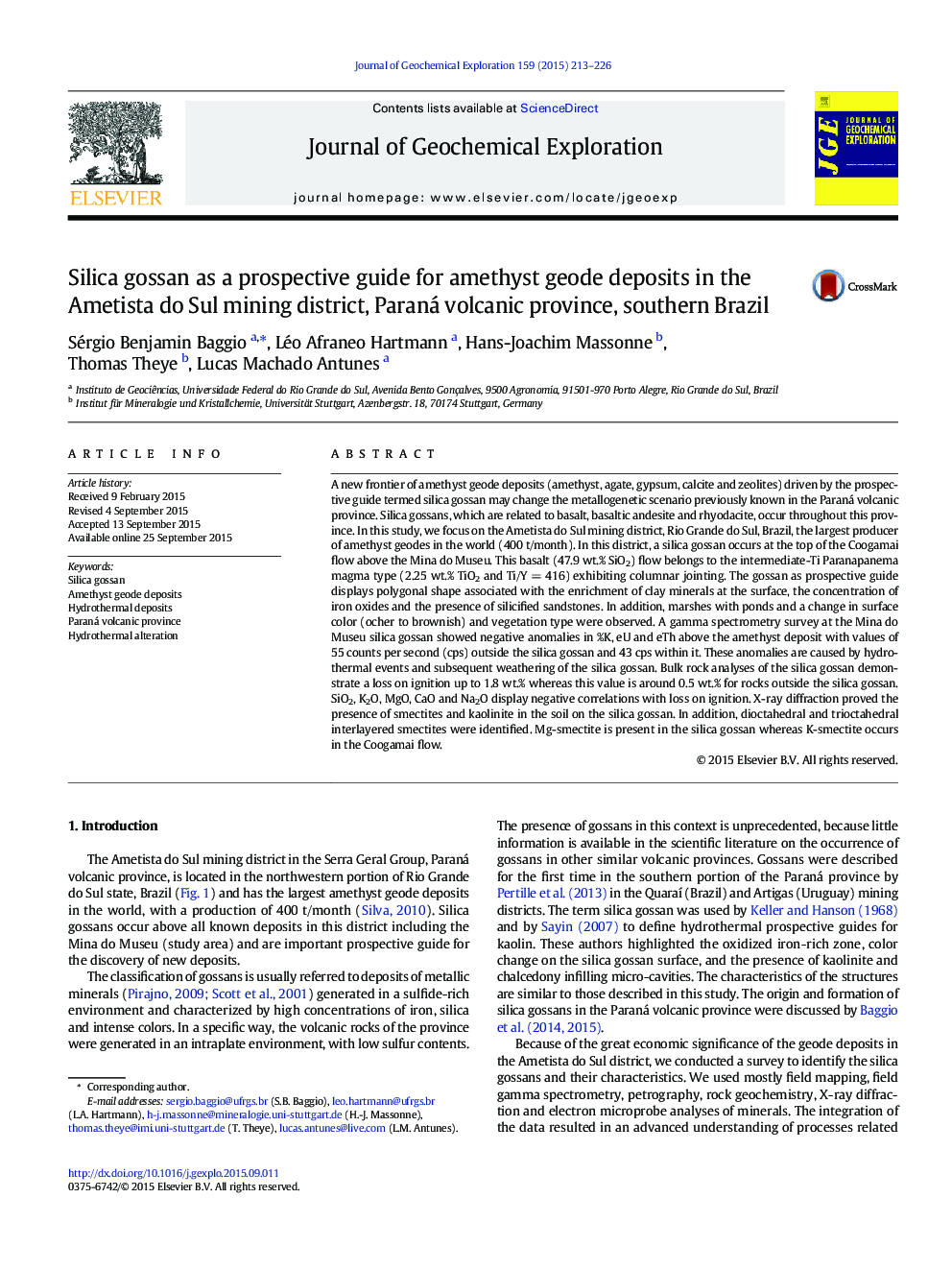| کد مقاله | کد نشریه | سال انتشار | مقاله انگلیسی | نسخه تمام متن |
|---|---|---|---|---|
| 4457062 | 1620900 | 2015 | 14 صفحه PDF | دانلود رایگان |

• Silica gossan prospective guide for amethyst deposit in the Paraná volcanic province
• The Mina do Museu silica gossan is a prime model for amethyst prospective guides.
• Paraná volcanic province: A new frontier of amethyst geode deposits
A new frontier of amethyst geode deposits (amethyst, agate, gypsum, calcite and zeolites) driven by the prospective guide termed silica gossan may change the metallogenetic scenario previously known in the Paraná volcanic province. Silica gossans, which are related to basalt, basaltic andesite and rhyodacite, occur throughout this province. In this study, we focus on the Ametista do Sul mining district, Rio Grande do Sul, Brazil, the largest producer of amethyst geodes in the world (400 t/month). In this district, a silica gossan occurs at the top of the Coogamai flow above the Mina do Museu. This basalt (47.9 wt.% SiO2) flow belongs to the intermediate-Ti Paranapanema magma type (2.25 wt.% TiO2 and Ti/Y = 416) exhibiting columnar jointing. The gossan as prospective guide displays polygonal shape associated with the enrichment of clay minerals at the surface, the concentration of iron oxides and the presence of silicified sandstones. In addition, marshes with ponds and a change in surface color (ocher to brownish) and vegetation type were observed. A gamma spectrometry survey at the Mina do Museu silica gossan showed negative anomalies in %K, eU and eTh above the amethyst deposit with values of 55 counts per second (cps) outside the silica gossan and 43 cps within it. These anomalies are caused by hydrothermal events and subsequent weathering of the silica gossan. Bulk rock analyses of the silica gossan demonstrate a loss on ignition up to 1.8 wt.% whereas this value is around 0.5 wt.% for rocks outside the silica gossan. SiO2, K2O, MgO, CaO and Na2O display negative correlations with loss on ignition. X-ray diffraction proved the presence of smectites and kaolinite in the soil on the silica gossan. In addition, dioctahedral and trioctahedral interlayered smectites were identified. Mg-smectite is present in the silica gossan whereas K-smectite occurs in the Coogamai flow.
Journal: Journal of Geochemical Exploration - Volume 159, December 2015, Pages 213–226